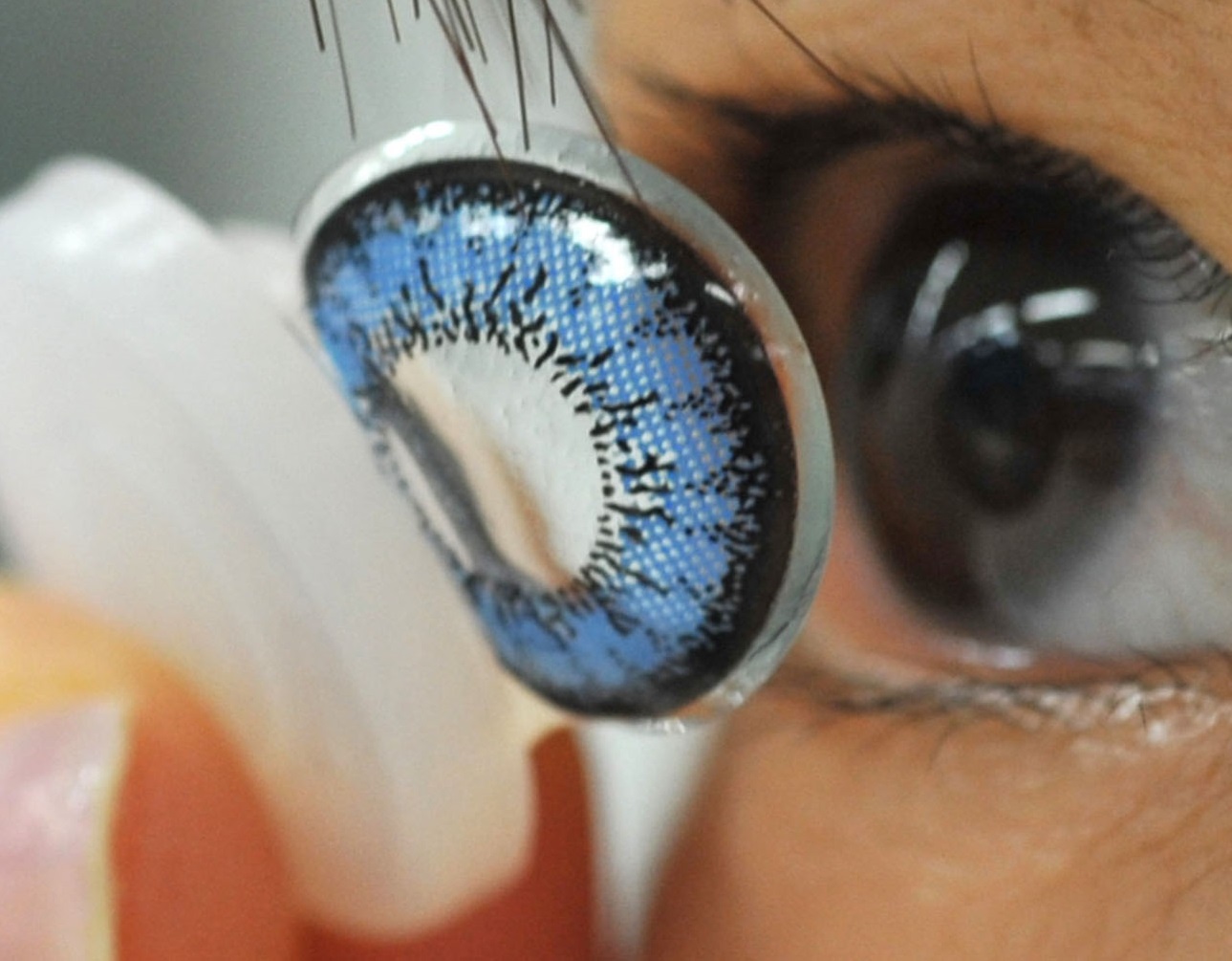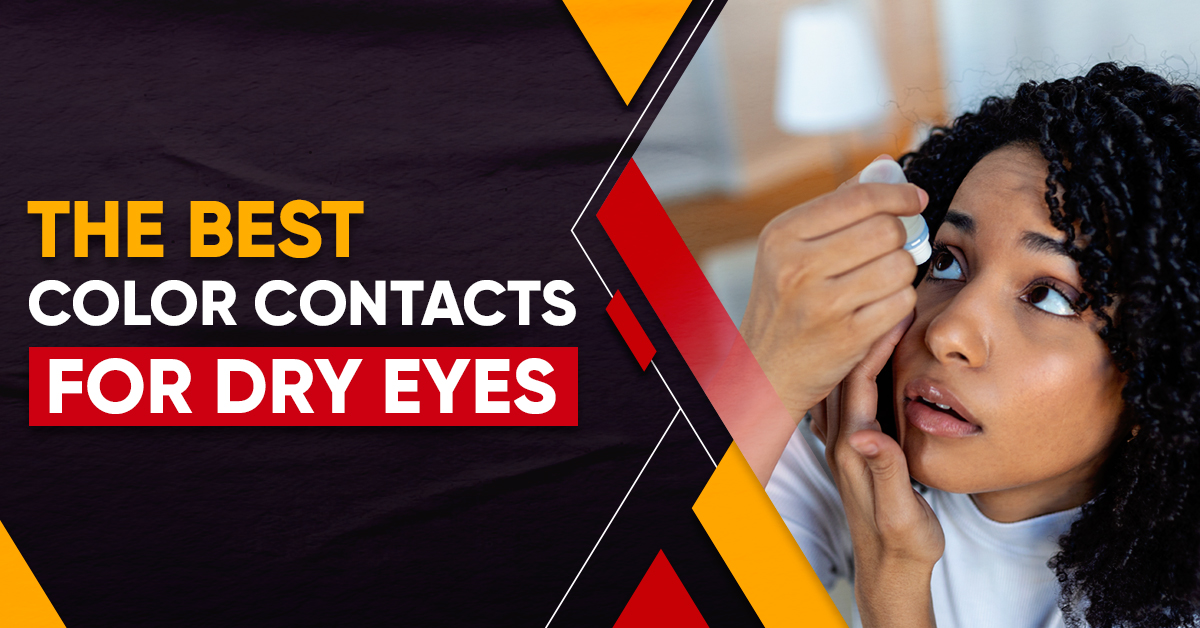Dry eye syndrome, or dry eyes, is an eye condition where tear ducts are unable to produce enough lubrication to keep the eyes moist. There is also a possibility that tear ducts are compromised due to aging, various illnesses, and certain types of medication that cause lower production of tears. Our environment can cause tear evaporation, and overall reduced moisture in our eyes. Certain contact lenses can also worsen dry eye conditions therefore finding the right color contacts for dry eyes can be tricky. In this write-up, we will tell you more about the best color contacts that cater to dry eye conditions, what is silicone hydrogel and how it can help you.
Table of contents
- Dry Eye Symptoms You Should Be Aware Of
- Is It Dangerous to Have Dry Eyes?
- Causes of Dry Eyes
- How Can Color Contact Lenses Cause Dry Eyes
- What is the Best Color Contacts Material That Safeguards Dry Eyes?
- Silicone Hydrogel: Benefits In A Nutshell
- PolyHEMA (Hydrogel) As An Alternative Option… Yay or Nay?
- Should We Avoid PolyHEMA Contact Lenses?
- Look Out for the Water Content
- What Are the Best Color Contacts Brands For Dry Eyes?
- To Sum It Up
Estimated reading time: 10 minutes
Dry Eye Symptoms You Should Be Aware Of
If you are experiencing any of these symptoms, there is a high possibility that you may have dry eyes. Do you fall under any of these categories?
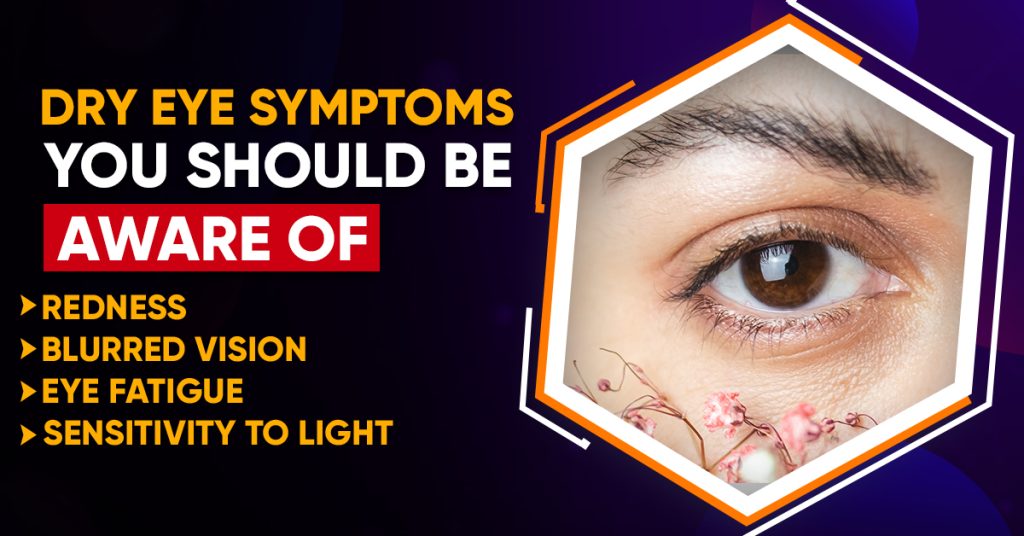
Redness, Blurred Vision, and/or Eye Fatigue
One of the most common symptoms of dry eyes is difficulty in seeing. Dry eyes also cause redness and tiredness, paired with a gritty or sandy sensation when opening or trying to keep eyes open.
Sensitivity to Light
Dry eyes can make the eyes more sensitive to lighting. It could also be more irritable when the wind is blowing towards your face. Other effects include frequent blinking, and seeing halos around lights. This, too, causes blurry vision. It kind of feels like you have something stuck between your eyelids. This will then make it difficult to keep them open for a long duration.
Is It Dangerous to Have Dry Eyes?
Dry eye syndrome can lead to an eye condition known as keratoconjunctivitis sicca, which is often referred to as KCS. This condition causes people with dry eyes to gradually lose their natural tear film. In addition to that, it makes it more difficult to produce any tears on their own.
With a lack of lubrication, it becomes increasingly difficult for the cornea. Simply because it will be more exposed due to the frequent opening of the eyelids. This situation will cause irritation that results in a slight sting around the eyes while you are using an electronic device such as a TV or a computer. If left untreated over a prolonged period, various eye infections can take place or worse, severe loss of sight.
Causes of Dry Eyes
Sometimes we may not realize it but our lifestyle or even surroundings play a big role in the effects that occur on our bodies. This includes the eyes too. The causes of dry eyes could be due to either of the following:
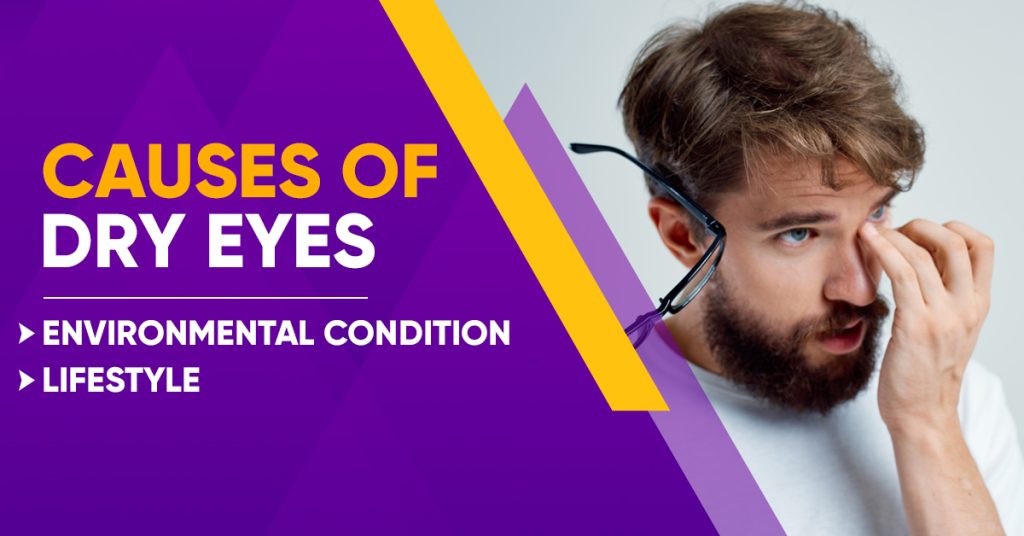
Environmental Condition
Being surrounded by wind, smoke, and even dry air is the most common cause of dry eyes.
Lifestyle
- Spending too much time on electronic devices can definitely harm the eyes. When you focus too much on the computer, game console, or even your phone, you tend to blink less. This can affect the moisture of the eyes.
- Not all eye drops are safe for your eyes. Preservative content in certain topical eye drops can cause side effects. One of them is dry eye syndrome.
- Incorrect usage of contact lenses can cause corneal sensitivity. Remember to be extra clean and careful when handling your contacts.
- Lasik eye surgery can improve your eyesight but bear in mind dry eye syndrome could occur too.
- Did you know that certain medications such as antihistamines and birth control can cause dry eyes too? Well, now you know.
Health
- The famous saying ‘We are what we eat makes a lot of sense, especially where our overall well-being is concerned. If you have Vitamin A deficiency, it could affect your eyesight.
- Tear production diminishes as we get older. It usually begins some time past the 50-year mark. So aging is one of the causes of dry eyes.
- Ectropion is a condition where the lower eyelid droops away from the eye and turns outwards. It is not usually serious but can be uncomfortable. This will make it difficult to keep the eyes completely closed.
- Dirt and bacteria build-up usually lead to eye allergies. Dry eyes cannot effectively wash away allergens therefore it is unable to keep the eyes free from all kinds of irritants.
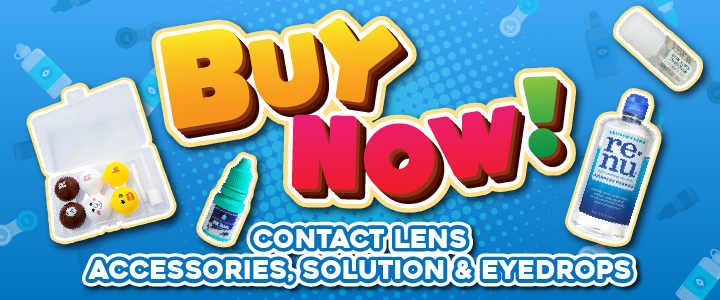
How Can Color Contact Lenses Cause Dry Eyes
There are several reasons why the wrong kind of contact lenses would often cause dry eyes.
Firstly, they limit oxygenation for the eyeballs because the lens tends to block the airflow whenever you blink.
Secondly, people with dry eyes will find that contact lenses cause blinking difficulties and redness. This makes it difficult for users to wear contacts comfortably.
When users handle contact lenses without caution, it can result in abrasions to the cornea, scarring, and other types of eye issues. So, if contact lenses can pose a risk to users with dry eyes, then color contacts are definitely a major no-no.
However, that does not have to be the case. All you need to do is learn about the different options of contact lenses that are available in the market. There are some that could cater to dry eye syndrome.
What is the Best Color Contacts Material That Safeguards Dry Eyes?
You could always start by asking your optometrist for silicone hydrogel lenses. What are silicone hydrogel lenses? They are an advanced type of soft contact lenses. If you intend to wear color contact lenses for an extended period of time, the ones made from silicone hydrogel would be your best bet.
The material used to produce silicone hydrogel lenses allows greater oxygenation, which helps maintain moisture within the cornea. It also provides comfort even after prolonged usage. L
et’s say you forget to take them off before going to bed, rest assured that you do not have anything to worry about. They are pretty good for overnight use too!
That’s not all, the silicone hydrogel lenses last longer compared to daily disposable ones. They are reusable for up to 30 days at the most, which is pretty cost-effective.
However, you must do your best to handle it with utmost care at all times. To make sure it lasts throughout the 30-day period, remove them from time to time for thorough cleaning and disinfecting.
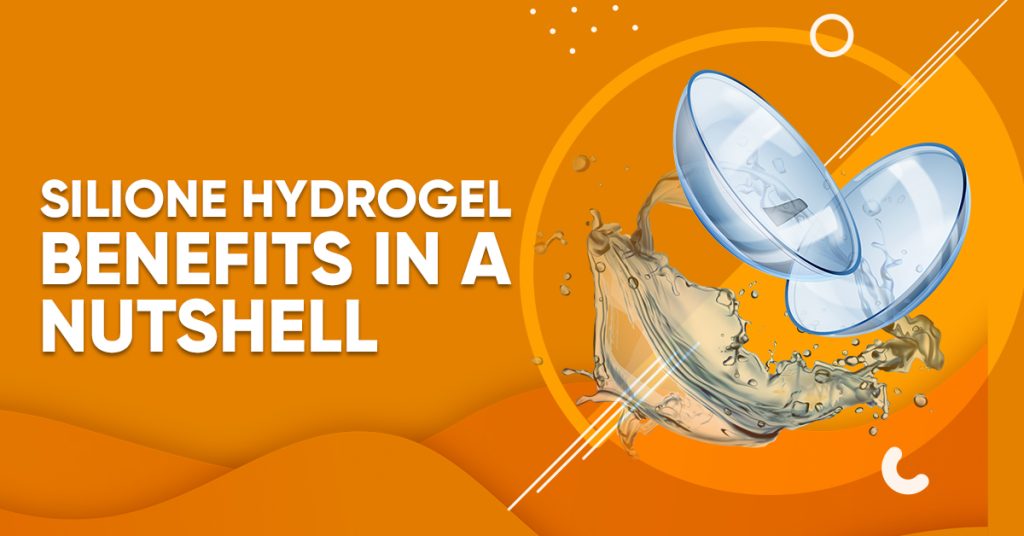
Silicone Hydrogel: Benefits In A Nutshell
Here are three key properties of silicone hydrogel contact lenses that make them ideal for users with dry eyes. These benefits show that there is a reduced risk of abrasions to the cornea.
- Offers contact lens users a greater degree of oxygen supply.
- Has twice the level of moisture compared to regular contact lenses.
- It restricts the accumulation of protein, making it safe to wear for long hours.
PolyHEMA (Hydrogel) As An Alternative Option… Yay or Nay?
We will not recommend using hard contact lenses to anyone with dry eyes. It is always better to opt for softer lenses as an alternative option to silicone hydrogel lenses.
Besides silicone hydrogel, you could opt for PolyHEMA, also known as hydrogel. Just like silicone hydrogel, this is made from a soft plastic material that contains water, which is a very important factor that provides oxygenation to the eyes.
There is a difference between hydrogel (PolyHEMA) and silicone hydrogel (SiHy). The latter is more advanced and allows for better oxygenation of the eyes.
This is important to remember when you are out hunting for color contact lenses for dry eyes. The rule of thumb is to go for higher and better quality instead of a cheaper option.
Why is this so? It is because the pigmentation that comes with color contact lenses would usually block off the permeation of water and oxygen. This is why the extra permeability incurred by silicone lenses makes them more suitable for those who want to add captivating hues to their eyes.
Should We Avoid PolyHEMA Contact Lenses?
Not necessarily because the benefits of silicone hydrogel do not mean that regular hydrogel lenses should be off your shopping list. It could be an acceptable alternative if you are looking for non-color contact lenses. Alternatively, if you are unable to find other silicone hydrogel options.
If you want to add an extra splash of personality to your look, silicone hydrogel or hydrogel lenses would be good enough for regular users. However, if you are prone to dry eyes, silicone is definitely the way to go.
Besides, silicone variants are not necessarily more comfortable than regular hydrogel. They mainly provide better safety for longer hours against hypoxia (deprivation of oxygen to the eyes) compared to a regular hydrogel.
They are also great for extended wear and can be left in the eyes for a full straight month. This makes it more appropriate for those who are mostly on the go or need something that is totally hassle-free.
Look Out for the Water Content
Another crucial consideration when purchasing contact lenses for dry eyes is the water content. Due to their hydrophilic nature, soft contact lenses would easily absorb moisture from their surroundings if they run low on water.
This means that you do not want to put them on your eyes when they are not filled and supple. The higher their default water content capacity is, the more water they would pull from the outside when it is dry.
In this case, silicone hydrogels are definitely more suitable as they typically contain lower water content and have greater oxygen permeability.
However, much like regular hydrogels, you will still need to keep them moist by using rewetting eye drops. Bear in mind that even the right kind of contact lenses can dry out.
For added comfort, remember to maintain the moisture with lubricating eye drops or get guidance from your preferred optometrist for the best solution to the problem.

What Are the Best Color Contacts Brands For Dry Eyes?
Here are the two best color contact lenses options for dry eyes. Their UV-blocking properties make them a more practical choice for those who regularly use gadgets and devices for long hours.
- Urban Layer – A trusted brand for silicone hydrogel lenses that stands out by creating hand-painted and natural colored contacts. They offer a wide variety of stunning colors and designs for color lenses. Go on, check out our range of Urban Layer collections here.
- Miacare – Miacare is well known for its silicone hydrogel contacts, borne of the innovative EautraSil Hydrophilic Silicone Technology. They offer monthly and daily wear lenses under the Delight and Confidence collections. Discover our vast offerings of Miacare here.
You can also take a look at our complete catalog of silicone hydrogel contact lenses, which includes different color variants. Trust us, you will be spoilt for choice. You’re welcome!
To Sum It Up
Options are plenty out there! So, you may be wondering which color contact lenses are the most ideal for dry eye symptoms. Lucky for you, we have done some research to help guide you in making the right decision that will not only protect your eyes against dryness but also provide unparalleled comfort and visual clarity.
There are many types of color contact lenses in the market that vary in water content level. However, silicone hydrogel is the one that offers the most benefits when it comes to safeguarding your delicate eye tissue from dehydration while maintaining superior optical performance.
The next time you think about investing in a new set of color contact lenses, it is good to take into consideration how they can affect your vision in the long run. Be extra mindful of the type of materials that are in a particular lens before deciding on one option over another. This is important especially if you are prone to chronic dry eyes.
Read More:

